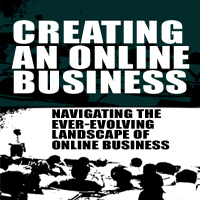


Turning Passion Into Profits

In today's digital age, blogging has transcended its origins as a mere online diary and has become a legitimate and potentially lucrative source of income for many individuals. While it may seem like a dream job to turn your passion into a paycheck, it's entirely possible with the right approach. This article explores the journey of blogging as a source of income and the steps to make it a reality.
1. Quality Content Is Key: To monetize your blog successfully, you must start with high-quality content. Your blog is your brand, and delivering valuable, engaging content is the foundation of building an audience and attracting income opportunities.
2. Identify Your Niche: Select a niche that you are genuinely passionate about and knowledgeable in. Your expertise and enthusiasm will shine through in your writing and attract an audience that shares your interests.
3. Build A Dedicated Audience: Growing your blog's audience is a critical step in turning it into an income source. Utilize SEO, social media, and email marketing to attract and engage readers. A larger, more engaged audience opens the door to various income-generating opportunities.
4. Affiliate Marketing: One of the most popular income streams for bloggers is affiliate marketing. This involves promoting products or services relevant to your niche and earning a commission for each sale made through your referral. Transparency is vital when using affiliate links to maintain trust with your readers.
5. Display Advertising: Display ads, such as Google AdSense, offer bloggers another income stream. Advertisers pay you based on ad clicks and impressions. However, ad placement should be strategic and not disrupt the reader's experience.
6. Sponsored Content: Collaborating with brands for sponsored content is a reliable income source. When working with sponsors, ensure their products align with your blog's niche, and always disclose any paid partnerships to your audience.
7. Sell Digital Products: If you have specialized knowledge in your niche, consider creating and selling digital products such as e-books, online courses, or downloadable templates. This approach provides a steady stream of passive income.
8. Membership And Subscription Models: Platforms like Patreon and Substack allow bloggers to offer premium content or perks to subscribers who pay for exclusive access. This model can create a loyal and steady source of income.
9. Consulting And Coaching: Leverage your expertise by offering consultation or coaching services within your niche. Many readers are willing to pay for personalized guidance and insights.
10. Stay Informed And Adapt: The digital landscape is continually evolving, and what works today may change tomorrow. Stay informed about industry trends and be willing to experiment with different income strategies. Be open to adaptation and flexibility in your approach.
Blogging as a source of income is not only possible but increasingly common. By providing high-quality content, growing your audience, and diversifying your income streams, you can turn your passion for blogging into a sustainable source of income. However, it's essential to maintain the authenticity and value of your content while exploring these income avenues. With perseverance and dedication, blogging can become a rewarding profession that allows you to turn your passion into profits while sharing your expertise with a global audience.
Key Strategies For E-commerce Success
 2. Market Research: Conduct in-depth market research to stay informed about your niche. Analyze your competitors, study market trends, and identify gaps or opportunities. Market research provides valuable insights that will guide your e-commerce strategy.
2. Market Research: Conduct in-depth market research to stay informed about your niche. Analyze your competitors, study market trends, and identify gaps or opportunities. Market research provides valuable insights that will guide your e-commerce strategy.
3. Comprehensive Business Plan: Develop a detailed business plan that outlines your mission, vision, goals, strategies, budgets, and revenue projections. A well-structured business plan is your roadmap to e-commerce success.
4. User-Friendly Website Design: Your website is your virtual storefront. Invest in a professional and user-friendly design that makes it easy for visitors to navigate and make purchases. Ensure that your website is responsive and optimized for search engines.
5. High-Quality Product Descriptions And Imagery: Clear and detailed product descriptions, along with high-quality images, are essential for e-commerce success. Provide potential customers with all the information they need to make informed purchase decisions.
6. Implement A Secure Payment Gateway: Security is paramount for e-commerce. Use a secure payment gateway to protect customer information. Options like PayPal, Stripe, and others offer reliable and secure payment processing.
7. Responsive Customer Service: Excellent customer service is a hallmark of a thriving online store. Respond to customer inquiries promptly, address concerns, and provide assistance when needed. Happy customers are more likely to become repeat buyers.
8. Shipping And Logistics Optimization: Efficient shipping and delivery processes are crucial for customer satisfaction. Offer various shipping options, provide tracking information, and set clear delivery expectations.
Navigating The Digital Marketplace
 Personalization: Customers are seeking tailored shopping experiences. Utilize data-driven insights to offer personalized product recommendations, content, and marketing campaigns that cater to individual preferences.
Personalization: Customers are seeking tailored shopping experiences. Utilize data-driven insights to offer personalized product recommendations, content, and marketing campaigns that cater to individual preferences.
AI And Chatbots: Artificial intelligence and chatbots are transforming customer service. They provide instant assistance, answer questions, and guide shoppers through the buying process, enhancing the overall user experience.
Voice Commerce: Voice-activated devices like Amazon's Alexa and Google Home are becoming more integrated into consumers' lives. Optimizing e-commerce sites for voice search is essential to tap into this emerging trend.
Sustainable E-commerce: Eco-conscious consumers are supporting businesses that prioritize sustainability. Offer environmentally friendly products, reduce packaging waste, and communicate your commitment to sustainability in your marketing.
Augmented Reality (AR) And Virtual Reality (VR): AR and VR technologies enable immersive online shopping experiences. Customers can visualize products in their own space or virtually try them on, reducing purchase uncertainty.
Social Commerce: Social media platforms are becoming powerful e-commerce tools. Utilize "Shop Now" buttons and in-app purchase options to reach customers directly where they spend their time online.
Online Business Challenges And Solutions
 1. Fierce Competition:
1. Fierce Competition:
Challenge: The digital marketplace is crowded, with intense competition in almost every niche.
Solution: Differentiate your online business by offering unique value, quality products, or exceptional customer service. Develop a strong brand identity to stand out from the competition.
2. Cybersecurity Threats:
Challenge: Online businesses are vulnerable to cyberattacks, which can result in data breaches and loss of customer trust.
Solution: Invest in robust cybersecurity measures, use SSL encryption, regularly update software, and educate your team about online security best practices.
3. E-commerce Platform Selection:
Challenge: Choosing the right e-commerce platform is crucial, as the wrong choice can lead to technical difficulties and limitations.
Solution: Carefully evaluate various e-commerce platforms based on your business's specific needs. Consider factors like scalability, ease of use, and available features.
4. Customer Trust And Credibility:
Challenge: Building trust and credibility can be challenging, especially for new online businesses.
Solution: Establish a professional online presence, provide transparent policies, collect and showcase customer reviews and testimonials, and use trust badges to reassure customers.
5. Search Engine Optimization (SEO) And Visibility:
Challenge: Ranking high in search engine results is vital for attracting organic traffic.
Solution: Invest in SEO best practices, including keyword research, on-page optimization, and quality content creation. Regularly update your website with fresh content and seek backlinks from authoritative sources.
Building A Strong Digital Foundation
 2. Thorough Market Research: Before venturing into online business development, research your target market. Understand your audience's demographics, preferences, and pain points. Analyze competitors and industry trends to identify opportunities for growth.
2. Thorough Market Research: Before venturing into online business development, research your target market. Understand your audience's demographics, preferences, and pain points. Analyze competitors and industry trends to identify opportunities for growth.
3. Comprehensive Business Plan: A detailed business plan is a roadmap to success. It outlines your strategies, budgets, revenue projections, and timelines. A well-structured plan will keep you focused and help you measure progress.
4. Build A User-Friendly Website: Your website is your digital storefront. Invest in professional web design that is user-friendly and responsive on all devices. Ensure that your site provides an excellent user experience and is optimized for search engines.
5. Content Strategy: High-quality content is the backbone of online business development. Regularly publish informative, relevant content that resonates with your audience. This not only attracts visitors but also positions you as an authority in your field.
6. SEO (Search Engine Optimization): Implement SEO strategies to improve your website's visibility on search engines. Use keywords, optimize meta tags, and earn quality backlinks to enhance your search rankings.
7. Social Media Engagement: Leverage social media platforms to engage with your audience. Share content, run targeted ad campaigns, and build a community around your brand. A strong social media presence enhances brand awareness and fosters relationships with customers.
 3. Focused Call To Action (CTA): Your offer design should prominently feature a clear and compelling call to action. Use action-oriented language such as "Buy Now," "Get Started," or "Claim Your Offer." Make sure the CTA button or link stands out visually, often using contrasting colors.
3. Focused Call To Action (CTA): Your offer design should prominently feature a clear and compelling call to action. Use action-oriented language such as "Buy Now," "Get Started," or "Claim Your Offer." Make sure the CTA button or link stands out visually, often using contrasting colors.
4. Mobile Responsiveness: In an increasingly mobile-driven world, it's imperative that your offer is designed to be responsive to different devices and screen sizes. A seamless mobile experience is essential for capturing conversions from users on smartphones and tablets.
5. A/B Testing: To achieve conversion excellence, A/B testing is essential. Create different designs and variations of your offers and test them with your audience to see which design performs best. Continuously iterate based on the results to optimize your offer design.
6. Trust Signals: Incorporate trust-building elements into your offer design. This could include security badges, customer testimonials, or industry certifications. These signals can boost confidence and encourage potential customers to take action.
7. Use Of Color Psychology: Colors have a profound impact on human psychology. Use colors strategically in your offer design to evoke emotions or convey specific messages. For example, red can create a sense of urgency, while green is associated with trust and positivity.
8. Visual Hierarchy: Design your offer with a clear visual hierarchy. Guide the viewer's eye to the most important elements, such as the value proposition, CTA, and any discounts or incentives. Use font size, color, and placement to prioritize these elements.